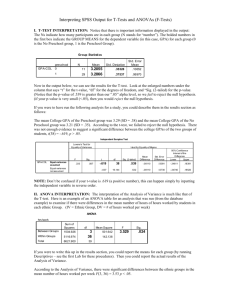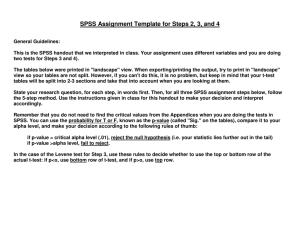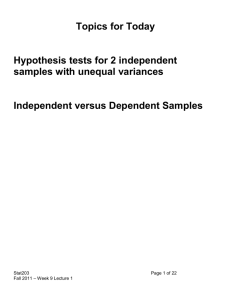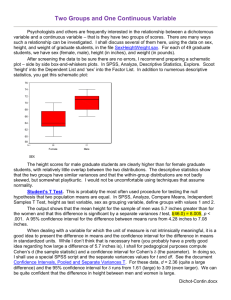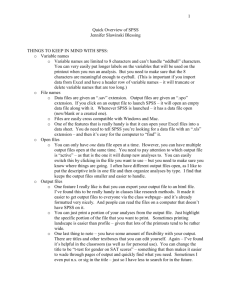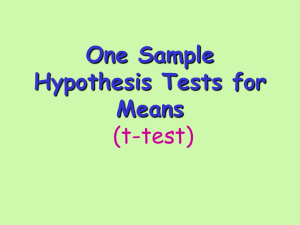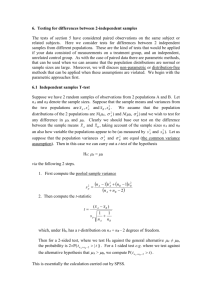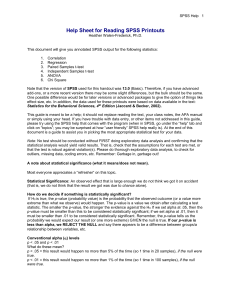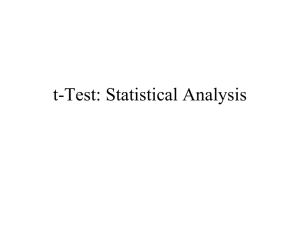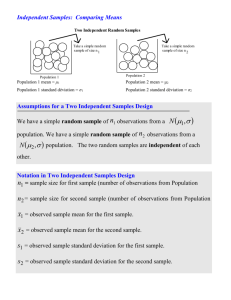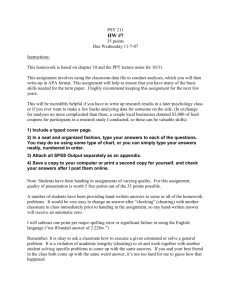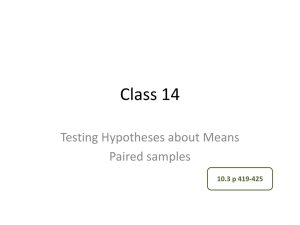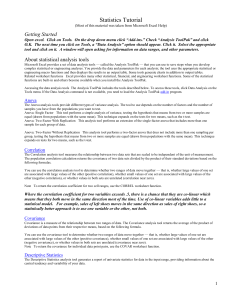Example SPSS Output for T-Test for Difference in Means
advertisement
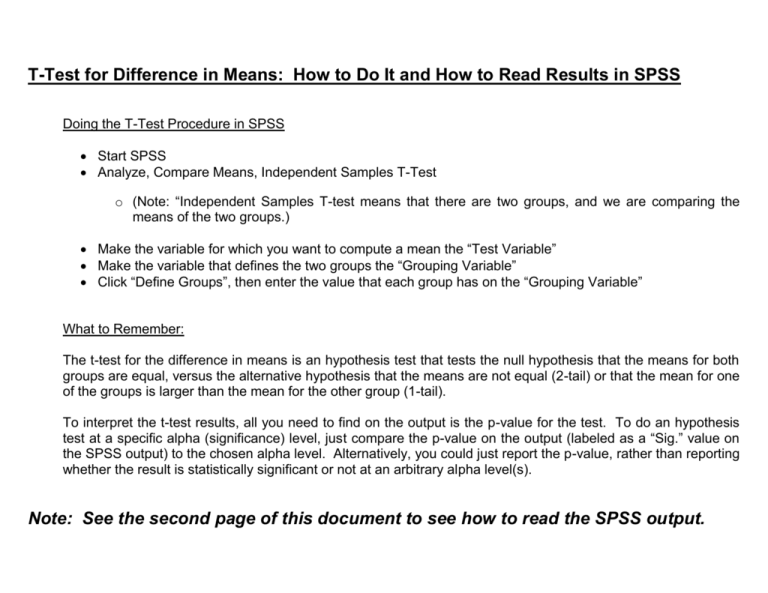
T-Test for Difference in Means: How to Do It and How to Read Results in SPSS Doing the T-Test Procedure in SPSS Start SPSS Analyze, Compare Means, Independent Samples T-Test o (Note: “Independent Samples T-test means that there are two groups, and we are comparing the means of the two groups.) Make the variable for which you want to compute a mean the “Test Variable” Make the variable that defines the two groups the “Grouping Variable” Click “Define Groups”, then enter the value that each group has on the “Grouping Variable” What to Remember: The t-test for the difference in means is an hypothesis test that tests the null hypothesis that the means for both groups are equal, versus the alternative hypothesis that the means are not equal (2-tail) or that the mean for one of the groups is larger than the mean for the other group (1-tail). To interpret the t-test results, all you need to find on the output is the p-value for the test. To do an hypothesis test at a specific alpha (significance) level, just compare the p-value on the output (labeled as a “Sig.” value on the SPSS output) to the chosen alpha level. Alternatively, you could just report the p-value, rather than reporting whether the result is statistically significant or not at an arbitrary alpha level(s). Note: See the second page of this document to see how to read the SPSS output. Example SPSS Output for T-Test for Difference in Means T-Test Group Statistics WEIGHT Vehicle Weight (lbs .) ORIGIN Country of Origin 2 European 3 Japanes e N 73 79 Mean 2431.49 2221.23 Std. Deviation 490.884 320.497 Std. Error Mean 57.454 36.059 Independent Sam ple s Te st Levene's Test for Equality of Varianc es F W EIGHT Vehicle W eight (lbs .) Equal variances as sumed Equal variances not as sumed 18.242 Sig. .000 t-t est for Equality of Means t df Sig. (2-tailed) Mean Difference St d. Error Difference 95% Confidenc e Int erval of t he Difference Lower Upper 3.150 150 .002 210.27 66.756 78.362 342.169 3.100 122.367 .002 210.27 67.832 75.990 344.541 How to Read this Output: Note the mean for each of the two groups in the “Group Statistics” section. This output shows that the average weight for European cars is 2431 pounds, versus 2221 pounds for Japanese cars. To see the results of the t-test for the difference in the two means, find the p-value for the test. The p-value is labeled as “Sig.” in the SPSS output (“Sig.” stands for significance level). To find the correct “Sig.”, look in the section of the “Independent Samples Test” output labeled “t-test for Equality of Means” and you will find a column labeled “Sig. (2-tailed).” This is the correct column, not the column labeled “Sig.” in the section of the “Levene’s Test for Equality of Variances” section. Finally, read the “Sig.” value in the second row, the row labeled “Equal variances not assumed”. We will use the second row since we almost never have any reason to think a priori that the amount of variation within each group will be the same (the p-value in the two rows is usually almost the same anyway). In the above example the p-value is .002, implying that the difference in means is statistically significant at the .1, .05. and .01 levels. Summary: To find the p-value for the hypothesis test for the difference in means, look in the column labeled “Sig. (2-tailed)” in the “t-test for Equality of Means” section, and in the second row (labeled “Equal variances not assumed”). Note that since the p-value given by SPSS is 2-tailed, you need to divide it in half for a 1-tailed test. In the above example the 1-tailed p-value would be .001.
